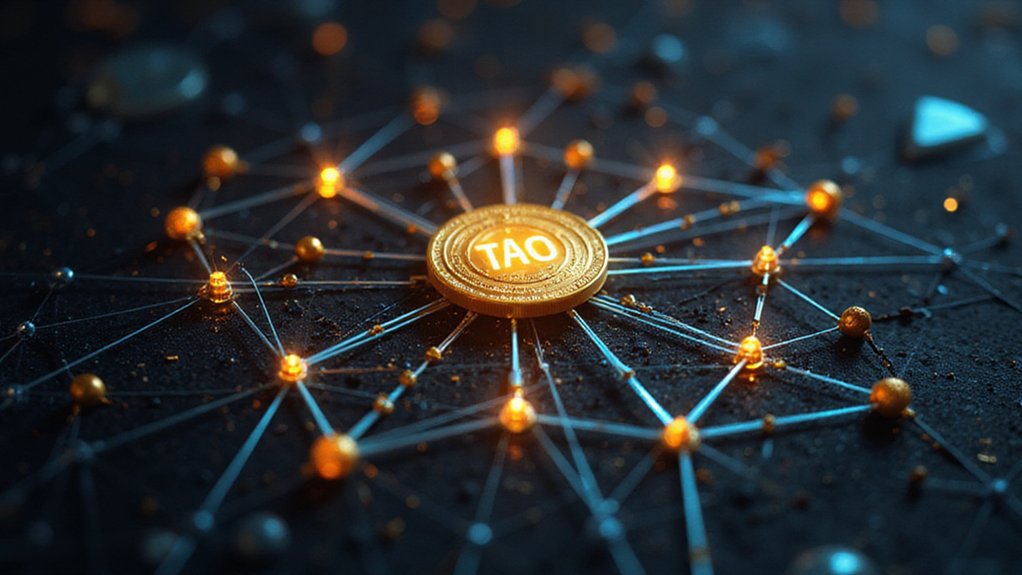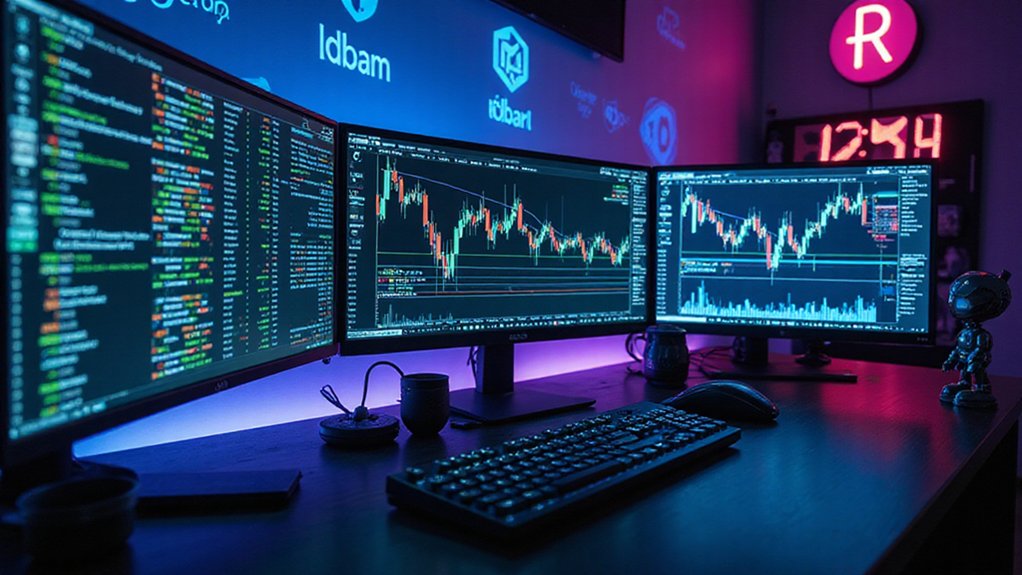Ondo Finance bridges traditional finance and blockchain through innovative CeDeFi solutions. The platform tokenizes illiquid assets like U.S. Treasuries and money market funds, creating accessible fixed income products such as USDY stablecoin and OUSG. Governed by its native $ONDO token, the ecosystem combines institutional-grade security with decentralized principles, democratizing participation in yields previously reserved for traditional finance gatekeepers. This regulatory-compliant approach to on-chain yield generation represents one of DeFi’s more sustainable paths forward.

In the rapidly evolving landscape of decentralized finance, Ondo Finance has emerged as a formidable bridge-builder between the institutional gravitas of traditional finance and the algorithmic innovation of blockchain-based systems.
This pioneer in the “CeDeFi” space—a portmanteau that might initially strike one as redundant until its implications are fully unpacked—has crafted an ecosystem where the transparency of blockchain meets the reliability of established financial instruments.
Ondo’s core proposition centers on democratizing access to fixed income products through tokenization, a process that transforms illiquid assets into blockchain-based tokens with remarkable efficiency.
Tokenization transforms illiquid assets into blockchain tokens, democratizing fixed income access with algorithmic precision.
The platform’s flagship offerings include the USDY stablecoin (which, unlike its more volatile cousins, features built-in yield generation) and OUSG products that provide exposure to income-generating assets.
These instruments enable participation in funds managed by behemoths like BlackRock and PIMCO—entities previously accessible primarily to accredited investors with significant capital reserves.
The governance structure of Ondo Finance operates through its native $ONDO token, empowering holders to participate in the decision-making processes that shape the platform’s evolution.
This decentralized approach (though one might question the true decentralization of any system involving traditional financial instruments) undergirds Ondo’s mission of financial inclusivity and global accessibility.
Beyond mere product offerings, Ondo’s significance lies in its potential to reshape yield generation and capital management in cryptocurrency markets. Its focus on regulatory compliance distinguishes it from many blockchain projects as it balances innovation with established financial safeguards.
By tokenizing real-world assets such as U.S. Treasuries and money market funds, the platform creates avenues for financial participation that transcend geographical and institutional boundaries.
The integration with Flux Finance, a decentralized lending platform, further extends Ondo’s capabilities.
The market position Ondo has carved out—leading in tokenized public securities—suggests that this fusion of traditional and decentralized finance may represent not merely a interim phase but potentially a durable model for financial services in the digital age.
Leveraging the smart contract technology inherent to blockchain systems, Ondo automates complex financial transactions while maintaining security and transparency for all participants.
Its approach to security, transparency, and institutional-grade offerings makes Ondo a significant player in blockchain’s financial frontier.
Frequently Asked Questions
What Are the Risks Associated With Investing in Ondo Finance?
Investing in Ondo Finance entails significant multifaceted risks.
Smart contract vulnerabilities persist despite audits, while the protocol faces governance challenges from parameter misconfigurations and whale-dominated voting. Market volatility compounds liquidity concerns, and regulatory uncertainty looms large.
The platform’s relatively brief operational history offers limited performance data, creating forecasting difficulties.
Institutional barriers remain substantial, with compliance challenges and custodial risks potentially undermining the bridge between traditional finance and DeFi’s experimental landscape.
How Does Ondo Compare to Other Defi Protocols?
Ondo distinguishes itself in the DeFi landscape through its hybrid approach, blending TradFi regulatory compliance with DeFi innovation—something many protocols avoid like the plague.
Unlike yield farming competitors that chase unsustainable APYs, Ondo offers structured products with risk isolation mechanisms.
Its tokenized real-world assets (particularly USDY) provide stability absent in purely algorithmic alternatives, while its tranche system offers investment flexibility rarely found elsewhere.
The platform’s institutional focus and KYC/AML integration further separate it from DeFi’s traditionally pseudonymous offerings.
Can Non-Us Users Access All Ondo Finance Products?
Non-US users cannot access all Ondo Finance products uniformly.
While Ondo Global Markets offers tokenized assets to international users, and secondary market transactions generally don’t require onboarding, participation in primary offerings necessitates passing KYC/AML procedures.
Some nationality-based restrictions apply regardless of residence.
Products like Flux (borrowing/lending) and Ondo Chain are designed for global access, but eligibility criteria evolve with regulatory changes.
The integration with Mastercard’s Multi-Token Network enhances cross-border capabilities for eligible international participants.
What Blockchain Networks Does Ondo Finance Operate On?
Ondo Finance operates across multiple blockchain networks to maximize accessibility and compliance.
Its cornerstone is the proprietary Ondo Chain, a permissioned layer-1 blockchain designed for institutional-grade RWA tokenization.
Additionally, Ondo integrates with Mastercard’s MTN blockchain settlement infrastructure and maintains compatibility with public chains like Ethereum.
This multi-chain approach—combining permissioned and public blockchain architectures—enables Ondo to create a sophisticated ecosystem that bridges traditional finance with DeFi while maintaining regulatory compliance and operational transparency.
How Are Interest Rates Determined for Ondo’s Yield Products?
Interest rates for Ondo’s yield products are determined monthly, calibrated to sit slightly below the yield of their underlying assets—primarily short-term US Treasuries and bank demand deposits.
This variable rate mechanism incorporates adjustments for operational expenses while ensuring the bulk of yield flows to holders.
The rates compound daily (maximizing returns without the inconvenience of lock-up periods) and are regularly recalibrated to maintain alignment with prevailing market conditions.









